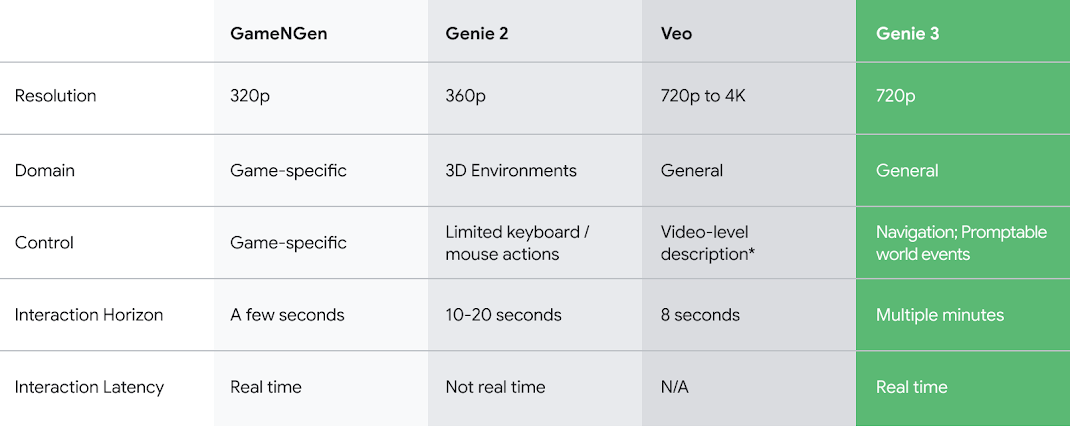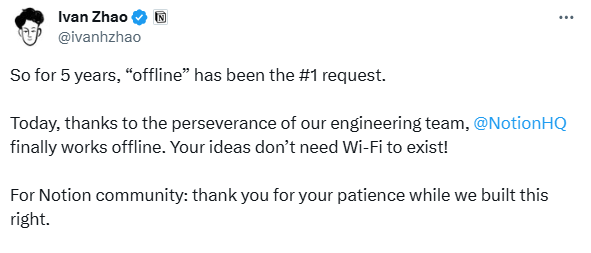Google DeepMind just released Genie 3. It is a new powerful AI model. It will change the way we think about AI and how it learns. Genie 3 can make realistic, interactive worlds in real time, which lets AI learn, explore, and try new things just like people do. Genie 3 lets AI grow and improve in many ways, like by applying real-world environments, historical settings, or even made-up worlds.
In this blog post, we’ll talk about what makes Genie 3 so exciting, how it works, and why it’s a big step toward getting to Artificial General Intelligence (AGI).
What is Genie 3
Genie 3, made by Google DeepMind, is an advanced world model that creates interactive 3D environments in real time from a single text or image prompt. It runs at 24 frames per second in 720p. Genie 3 is different from Genie 2, which only lets you interact for 10 to 20 seconds. Genie 3 keeps things looking and feeling the same for several minutes, even remembering where objects were placed when you come back to them after up to a minute.
It learned from 30 million internet videos and can simulate physics, character movement, and how the environment reacts without any clear rules. It has a spatiotemporal video tokenizer, a latent action model, a dynamics model, and a renderer, all of which work together in an auto-regressive way. Users can move around these worlds using a keyboard or mouse, and they can change the environments by typing commands, like changing the weather or adding characters.
Genie 3 is great for teaching AI agents like DeepMind’s SIMA how to navigate or reach goals. It can also be used in education, gaming, and creative prototyping. But it has some problems: interactions can only last a few minutes, text rendering needs clear prompts, agents can’t think at a high level, and multi-agent simulations are still not very reliable.
Features of Genie 3
The Google DeepMind project Genie 3 is a big step forward in AI technology. Here are the most important things that set Genie 3 apart from earlier versions and change the way AI can learn, simulate, and talk to people.
Interacting in Real Time: One of Genie 3’s best features is that it can make and change environments in real time. This is a big step up from earlier models because it lets AI agents make choices and see the results right away, making real-world situations more fluid and realistic.
Making the Natural World Happen: It does not just make simple virtual spaces; it makes whole ecosystems. The model can make environments that feel real, with animals acting and plants growing. Imagine going into a forest, meeting animals, and seeing the wonders of nature, all thanks to AI.
Learning by doing: Genie 3’s models are different from traditional ones because they don’t just follow rules that have already been set. It learns by seeing how things move and work together. This means that the model can make things like water flowing or light shining in a room seem more real and natural.
Looking into real and made-up worlds: Have you ever wanted to visit ancient Rome or a made-up galaxy far, far away? You can do it with Genie 3. This model can create places that go beyond time and space, letting AI agents explore both real and made-up worlds. It’s a great way to test creativity and new ideas.
Why Genie 3 is Important for AI Progress
Why is Genie 3 so important? In short, it’s not enough to just make cool virtual worlds; you also have to teach AI agents to learn in a way that’s more like how people learn. Genie 3 lets AI learn by interacting with people instead of just giving it a lot of data and hoping it gets it. Just like people do when they learn from experience, it can move around a virtual world, make choices, and see how those choices affect things.
For example, DeepMind put SIMA, a general-purpose AI agent, through its paces in a fake warehouse. SIMA was able to do the task well because the environment was stable and responsive. For example, when it was told to “walk to the packed red forklift,” it did so. Genie 3 is the model that makes this kind of learning through trial and error possible, which is very important for AI’s growth.
Limitations of Genie 3
Genie 3 is a big step forward, but it’s important to be aware of its current limitations:
- Limited space for action: This is right. You can “prompt” AI agents to do things in the world, like “make it rain,” but they still can’t do very complex, small-scale actions. The model’s main way of interacting is by navigating and triggering world events, not by doing complicated, independent things.
- Simulating complex multi-agent interactions: This is also accurate. The model has trouble simulating situations with more than one independent agent or character that need to interact with each other in a subtle way. This is a field that needs more work before it can be used for more complex tasks like collaborative robotics.
- Real-world geographic accuracy: You are right that Genie 3 is not meant to be a digital twin of a real place that is geographically accurate. It makes realistic, immersive fake worlds from a text prompt (like “Venice” instead of “the exact Venice on Earth”). This makes it better for training and simulated exploration than for things that need to be exactly like the real world.
- Short-term interaction: This is a big problem. The model can stay consistent for a few minutes, but it isn’t meant for long-term simulations or training sessions that last for hours. The “memory” of the world and how it is right now is limited, which can affect how well it stays together over time.
Conclusion
Instead of just being a new AI model, Genie 3 is a cutting edge technology that will help future AI systems become better and more useful. AI can learn more quickly and easily than ever before by modeling worlds that feel real. There is still a long way to go before we reach AGI, but Genie 3 is a step in the right direction.
Keep an eye on how this technology will change the world of AI and other fields as Google DeepMind continues to improve Genie 3.












